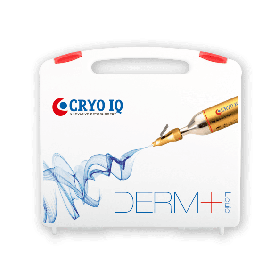Case study - Cryotherapy for Verruca Treatment
by Vince Zevallos Herencia
This case study describes the use of the freezpen on a longstanding verruca. Monitoring pain levels throughout the treatment process and any side effects.
A verruca is an infection of the skin caused by a virus called the Human papilloma virus (HPV) of which there is many variables. They occur more commonly in children than adults. The average life span of a vp is 2 months to 2 years. They often present as a cauliflower appearance that contain black dots which are caused by small blood vessels leaking into the lesion. The virus infects the top layer of the skin usually entering through a tiny scratch where it triggers a rapid growth of skin.
Patient treament for verruca
Treating a patient with a verruca that has been longstanding and that is not improving is challenging. Treatment depends upon how the troublesome the vp is. The treatments available either work by destroying or removing the vp, or by stimulating the immune system to eradicate it. Sometimes this can take weeks if not months so patience and persistence are vital. Unfortunately, in the NHS and cost cutting and limiting treatments podiatrist don’t always have the option of seeing someone for months. Often patients are seen for 6 weeks and after they are discharged to continue with self-care with OTC products.
Case Study - 17 years old female
A 17 years old girl attended the clinic with a verruca on her R1st plantar IPJ joint measuring approx. 4cm long with a width of 3mm with a 3-year history, having tried a number of treatments including OTC such as bazuka, tea tree oil and banana skin regime.
The area was painful and walking had become difficult. The VAS scale was used to measure the pain. Before treatment commenced the VAS score was 7/10.
The area was confluent, skin coloured, verrucous papules and disrupting normal dermatoglyphics of the plantar area. The thrombosed capillaries differentiate the lesion from a corn and other podiatric presentations.
(Pre debridement)
WEEK ONE
The aim of the study was to establish the effectiveness of the freezpen for the treatment of verruca. A protocol was established so that all the treatment was conducted the same at all times.
METHOD
- The area was prepared with hydrex.
- The callus over the verruca was debrided
- The freezpen was then applied as close to the skin as possible without any direction skin contact.
- The nitrous oxide was expelled from the pen for 20 seconds moving in very smaller circular actions at all times and then allowing the area to defrost and the repeating the same (in total 2x20sec).
- Semi compressed felt was used to deflect pressure from the area. The patient was advised to keep the padding in place for 48 hours and keep dry.
- Following the removal of the padding the patient was advised to file the area daily to remove any callus that may have built up and then using of disposable files was strongly recommended so not to reinfect the area with a contaminated foot file.
- The patient was reviewed the following week but no further treatment was provided on this occasion.
- The patient then returns the following week for a repeat of the freezpen treatment (2x20 sec) and padding and on-going self-care.
(Post debridement)
WEEK ONE
DISCUSSION
The patient was very compliant and followed the advice as discussed. The patient reported no side effects following the use of the freezpen. The only thing noted was she advised me “that it felt very cold”. Post operatively no blistering or skin damage was noted. Compared to the traditional cryotherapy used with the NHS no side effects followed. Often following the use of liquid nitrogen blistering can often be seen which can be quite debilitating. Often it is not advised for children 10 years old due to associated pain and nerve irritation.
The freezpen has provided a practical and easy to use treatment for VPs. The freezpen is highly precise and healthy tissue is not affected. The freezpen was also ergonomically friendly and took up very little space in comparison to liquid nitrogen no special storage requirements were needed.
RESULTS
The patient had a total of three treatments with the freezpen and the vp had regressed. No further care was needed. No side effects or tissue damage or nerve irritation was noted.
(After 3 treatments)
PAIN SCORE
| Week | Before Treatment | After Treatment |
| One | 7/10 | 5/10 |
| Two | No treatment, review only | 4/10 |
| Three | 4/10 | 4/10 |
| Four | No treatment, review only | 3/10 |
| Five | 1/10 | 1/10 |
| Six | No treatment, review only | No VP 0/10 |



